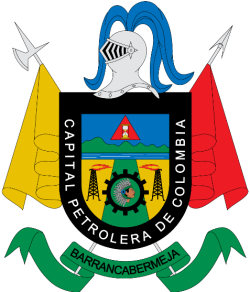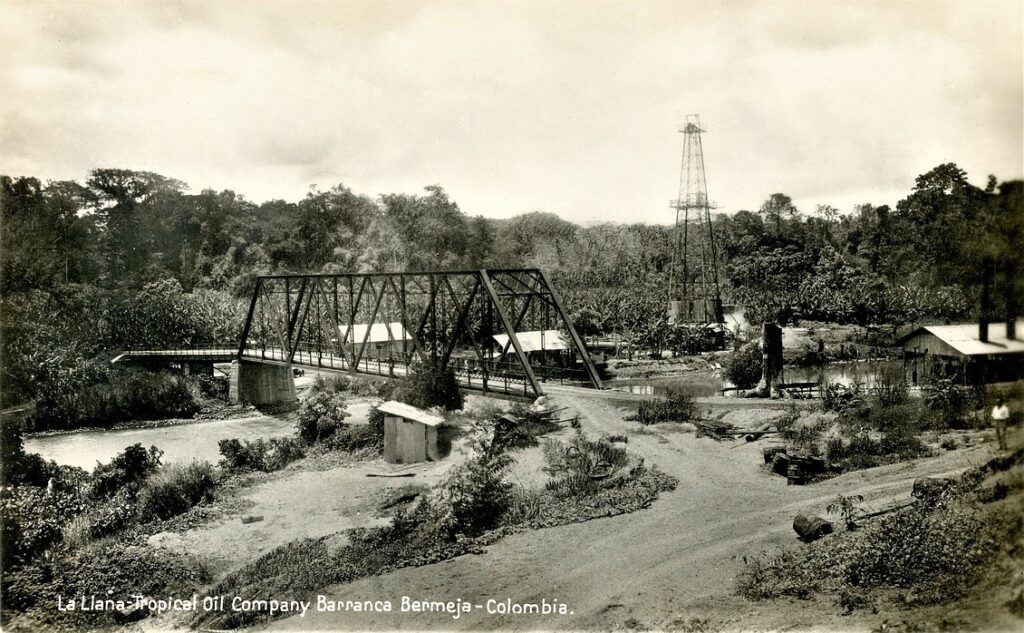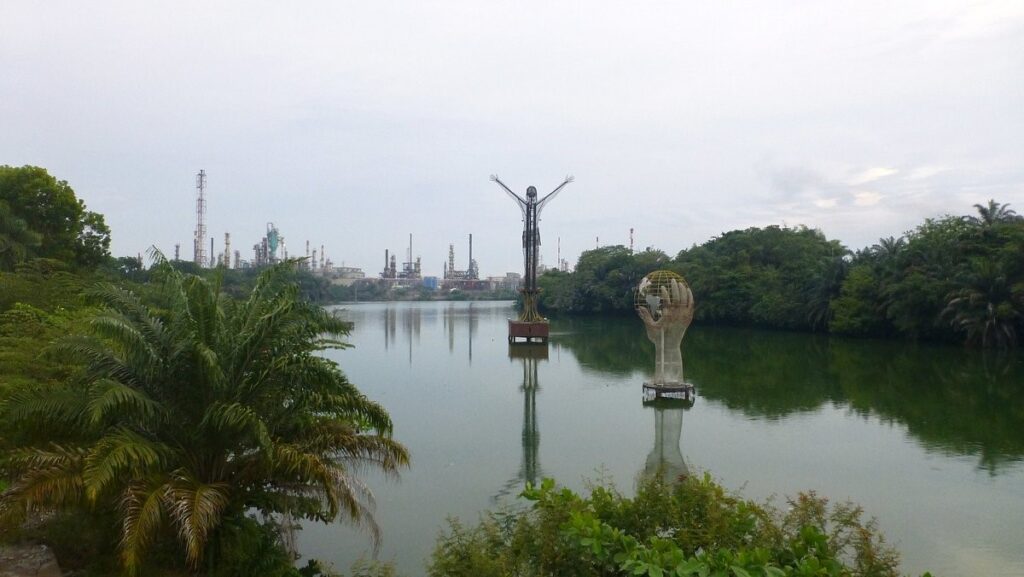Barrancabermeja
Department
Santander, Colombia

Flag of the city
Flag of the municipality of Barrancabermeja (Santander). “It is made up of two (2) horizontal stripes of equal dimensions in yellow and black, at the top, the yellow stripe that symbolizes wealth and the black stripe that symbolizes oil fields, called Black Gold

Seal of the city

Slogan of the city
Barrancabermeja is recognized as
“Colombia’s Oil Capital”. Situated 114 km west of Bucaramanga and nestled on the shores of the Magdalena River in the Middle Magdalena region, it stands as the largest municipality in the area and ranks second in the entire department.
History

Barrancabermeja is a city in the Santander department of north-central Colombia, positioned along the Magdalena River. The area was first discovered in 1536 by the Spanish conquistador, Gonzalo Jiménez de Quezada, who came across an Indian settlement named La Tora, fortified with wooden palisades. Later, influenced by the reddish cliffs nearby, the Spaniards renamed the settlement Barrancas-Bermejas. The city evolved into a hub for ranching and became a central marketplace for beef. Its trajectory changed with the establishment of the Mares Oil Concession in 1921, which accelerated the city’s growth due to the burgeoning petroleum industry. Infrastructure in and around the city expanded, including highways, railroads like the Atlantic Railway connecting Santa Marta and Bogotá, and oil pipelines. The city also boasts a significant oil refinery and an international airport. One of its standout landmarks is the Cathedral of the Sacred Heart of Jesus.
Geography of the city
Barrancabermeja is strategically situated in the north-central part of Colombia. Geospatially, it’s positioned approximately at a latitude of 7.0653° N and a longitude of 74.8543° W with altitude of 75 m (246 ft). The city is flanked by various neighbors: to its north lies Puerto Wilches; to the south, one would find Puerto Parra and Simacota; to the southeast are San Vicente de Chucuri and Giron; and its western boundary is defined by the meandering Magdalena River. It’s a mere 116 km from Bucaramanga, the capital of the Santander department. With its location along the banks of the Magdalena River, Barrancabermeja used to be connected to the region of Antioquia, which is abundant in oil fields, via a ferry service. Now, a bridge spans the river, making transportation between these vital regions more streamlined.

Population
209598(2020)
203,537(2018)
One photo representative of the city
Cristo Petrolero stands as a testament to the city’s identity as Colombia’s oil capital. Erected in honor of the oil workers, the statue is a silhouette of Jesus Christ holding an oil rig in one hand, symbolizing the blessing and protection over the petroleum industry and its workers. Located in a prominent area of Barrancabermeja, the Cristo Petrolero has become an iconic landmark and is a must-visit for anyone traveling to the city. It reflects not only the religious faith of the local community but also their pride in the oil industry that has shaped the region’s history and economy.
The Cristo Petrolero offers both historical and cultural insights into Barrancabermeja and stands as a unique blend of industry and faith.

Etymology
The name “Barrancabermeja” is derived from Spanish and has geographical significance.
Barranca: In Spanish, “barranca” translates to “cliff” or “bluff.”
Bermeja: “Bermeja” in Spanish refers to a reddish colour.
The name “Barrancabermeja” translated as “Reddish Cliffs” or “Reddish Bluffs.” This is likely a reference to the natural geography of the region, particularly the reddish cliffs along the Magdalena River where the city is situated. The name encapsulates the city’s scenic backdrop and has roots in the observations made by early settlers or visitors who were struck by the distinctive appearance of the riverbanks.
What the city is known or famous for
Barrancabermeja, often referred to as the “Oil Capital of Colombia,” stands as a beacon of the country’s petroleum industry. Its significance in the oil sector is not merely historical but also deeply embedded in its present-day identity, economy, and culture.
The genesis of Barrancabermeja’s association with oil dates back to the early 20th century. The discovery of oil in this region propelled its transformation from a modest settlement along the Magdalena River to a bustling city with national economic importance.
The heart of Barrancabermeja’s oil industry is the massive refinery operated by Ecopetrol, Colombia’s national oil company. Established in the mid-20th century, it’s one of the largest refineries in Latin America. Over the years, it has undergone numerous expansions and technological upgrades, ensuring that it remains at the forefront of refining processes.
The oil industry is the primary driver of Barrancabermeja’s economy. It provides employment to thousands, both directly within the oil and refining sectors and indirectly through ancillary services and industries. The revenues generated have funded infrastructure, education, and other essential services for the local population.
